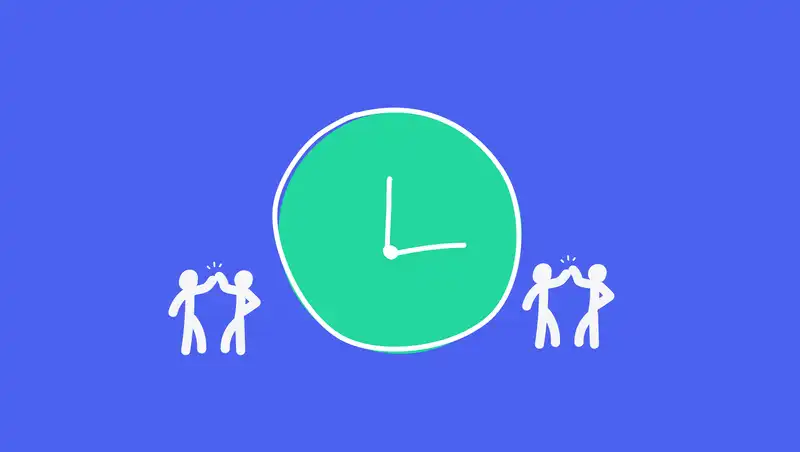It’s unrealistic to expect humans to work like machines. A quick Google search of productive work hours in the average 40 hour working week will present you with various studies stating that the average employee is only productive three hours per day, or an average of 12.5 hours per week. That’s a huge chunk of wages for very little return.
Many forward-thinking organisations are experimenting with alternative working conditions, allowing workers to work from home a few days a week, work reduced hours or days without a reduction in pay.
Different strategies work for different companies and people. In this article, we will explore the various factors that impact productivity, and discuss how Codebots uses an allocation factor to accommodate inevitable productivity dips and accurately calculate actual time spent working on software projects.
What activities hinder productivity?
There are a number of factors that disturb productivity in the workplace. According to a 2017 study, while the number of hours people are spending at work has increased from 44.3 to 45.1 between 2015 to 2016, the proportion of one’s day spent on actual work has dropped from 46% of the day to 39% of the day.
The biggest productivity hindrances on average were spent as follows:
- 16% on emails;
- 11% on useful and/or productive meetings;
- 11% on administrative tasks;
- 10% on wasteful meetings;
- 8% on non-essential interruptions; and
- 5% on everything else, i.e. coffee breaks, bathroom breaks, etc.
We’re experiencing what is being described as ‘collaboration overload’. More than a third of all meetings are ad hoc, and more than 50 percent of employees report that the number of meetings they have is increasing, with 67% of employees reporting that more than half of the meetings they attend are not of value. The consequences of the overwhelming amount of disruption has seen workers going home and working at night, which is leading to burn outs and other stress related diseases that further reduce productivity and performance.
The average IT organisation spends 45-55% of its time on unplanned and ‘urgent’ activities, meaning they spend less than half their time on their primary job responsibilities. Furthermore, developers waste on average, 23% of development time due to technical debt, frequently forcing them to introduce new technical debt.
How does your circadian rhythm impact productivity?
Our circadian rhythm makes us more productive - both intellectually and physically - at certain times of day, explaining that we are unable to be productive for eight consecutive hours in a day. The average human has two productivity peaks in a day. The first takes place mid-late morning after waking up, then after noon sees a lull, reactivating around 3-4pm, reaching maximum productivity until 5-6pm.
The intense workload in modern working environments has seen an increase in the need for multitasking skills. A study by the New York Times states that when you multitask, you tend to make more mistakes as toggling back and forth between tasks means the neural networks of your brain must backtrack to figure out where they left of, then reconfigure.
A recent article by Trello which explored Scandinavian work culture, said Parkinson’s Law - which states that “work expands to fill the time available for its completion,” is the reason people working an 8 hour day complete the same amount of work (or less) than people working a 6 hour day. Basically, the more time you have to do something, the more likely you are to procrastinate or dawdle.
Culture impacts productivity. Forward-thinking companies are taking action to improve culture and boost productivity.
The increase in work/life balance dissatisfaction, has seen many companies recognising that traditional organisational methods are no longer appropriate. Many forward-thinking companies are reinventing their organisational principles. Scandinavia for example, has adopted 6 hour working days, which has seen a dramatic increase in work satisfaction and a more productive workforce.
Culture and productivity are closely related, as productivity is deeply affected by motivation and motivation thrives in a good work culture. High tech companies like Google, Facebook, and several Silicon Valley startups are well known for their perks. One underlying assumption is that happy software developers perform better than unhappy ones.
Google was one of the first major players to recognise the benefits and impacts that a positive workplace culture can have on employee happiness and by extension, an organization’s overall productivity. Google provides employees with flexible working arrangements, break-out rooms and collaboration spaces, all of which aim to foster a sense of community amongst employees, enabling them to work on their own terms. The result? An astonishing 86% satisfaction rating among employees, and one of the happiest and most productive workforces in the modern world.
As we transition into a world where every business is becoming a tech company, the demand for software developers is increasing. According to the US Bureau of Statistics, employment of software developers will grow 21% between 2018 and 2028.This high demand means software developers have more control over where and how they would like to work, which is why enterprises are increasingly recognising the importance of good work culture. A high employee turnover rate means more time is spent on onboarding, which again, negatively impacts productivity.
Codebots’ allocation factor sets more realistic productivity goals.
While a machine can spend eight consecutive hours focused on its primary task, it’s important to acknowledge that for human employees, this is unrealistic. We encourage our employees to take regular mental focus breaks, work from home when needed, and use break-out rooms to remove themselves from potential distractions when they need to buckle down and smash out work.
While various studies have found that employees are only actively working on their primary role for 39% of their time, high performing IT teams are capable of only spending 5% of their time on unplanned work.
We have run several experiments where we have tracked actual hours spent on an employee’s primary role, and found that on average, our employees spend 80% of their workday actively working on tasks that are part of their primary role. While we could further reduce the other 20%, one of our core values is “scientific but not heartless”, and we prefer to leave this extra wiggle room open for our team. We have found this boosts a culture of collaboration, socialisation, and happiness, where team members feel comfortable taking the time to share knowledge and improve as a collective.
Through these experiments, we were able to create the allocation factor, which multiples project estimates by 1.25. This helps us create more accurate project timelines, and only charge customers for actual time spent working on their project.

By defining an allocation factor buffer for “other work”, employees are better able to prioritise their daily workloads. Effective prioritisation allows us to work more efficiently, minimising fire drills and taking control of drive-by requests. We have also implemented other methods designed to reduce disruptions and optimise productivity. For example, we use a “cone of silence” over our instant messaging communication app during our most productive hours of the day.
The allocation factor and culture of collaboration have helped us ensure our employees are happy and productive, so we can continuously deliver value to our customers.




